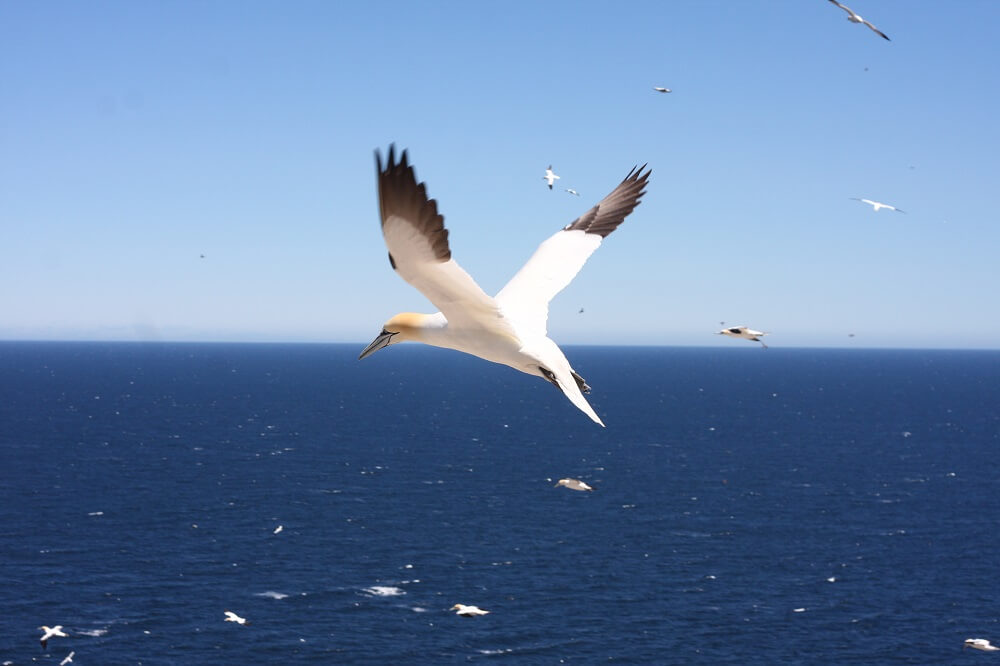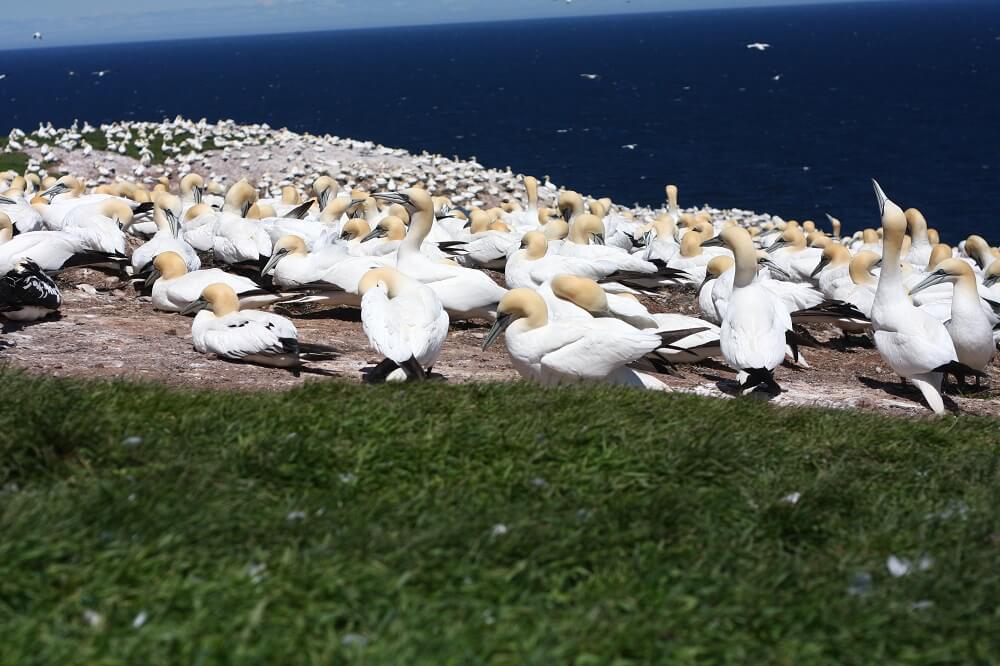There’s been a lot of action in the Gaspé this week! In addition to spotting harbour seals every day in Gaspé Bay, one observer saw a large congregation of pinnipeds there on Saturday. Through her spotting scope, she counted nearly 300 of them “frolicking on the surface.” And she is not the only one to have witnessed such a gathering. Not far from there, a resident observes hundreds of harbour seals crowding together on the ice at Sandy Beach, in front of the village of Penouille. In Rivière-au-Renard, however, just a single seal was seen last Thursday resting on a large block of ice.
But one of the most striking observations on the peninsula this week is the arrival of the first northern gannets in Cap-des-Rosiers. “It’s an irrefutable sign of the official arrival of spring!” says one of our contributors. Gannets are seabirds that are easily recognized by their yellow head and white body. Every year, after spending the winter off the coast of the southeastern U.S., they return to Canada to breed. In North America, all colonies of this species are located in the Gulf of St. Lawrence and eastern Newfoundland. The largest of these is found on Bonaventure Island in the Gaspé Peninsula, which contains tens of thousands of pairs.
In Gallix, the only reports have been of a few harp seals swimming or basking daily in the sun. The same goes for Sept-Îles, where a single seal was briefly seen last Thursday resting on a chunk of ice. “I can hardly wait to see the first spouts offshore,” exclaims mariner Jacques Gélineau.
Lastly, two belugas spotted near the pilot station in Les Escoumins were the icing on the cake for this week’s observations. And the more the ice continues to melt, the more cetacean enthusiasts are growing impatient in anticipation of the imminent return of whales to the Estuary!
Have you seen a seal or a whale?
Share your observations and photos by writing to us at [email protected] or on our Facebook page.






